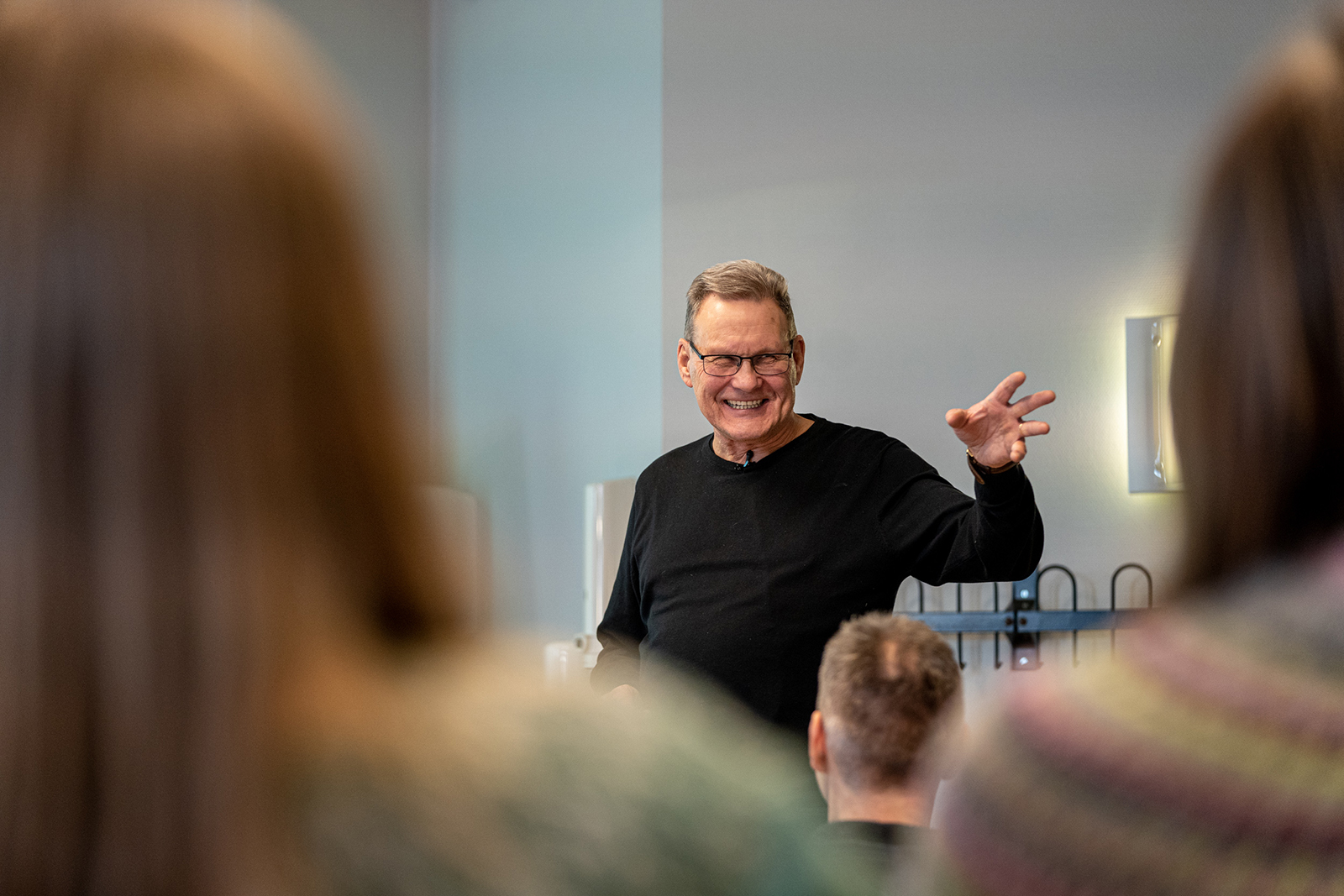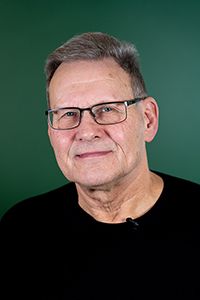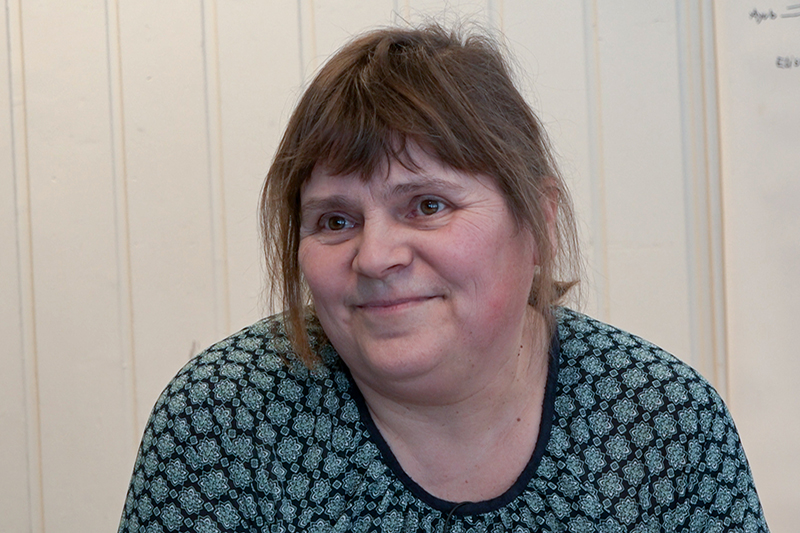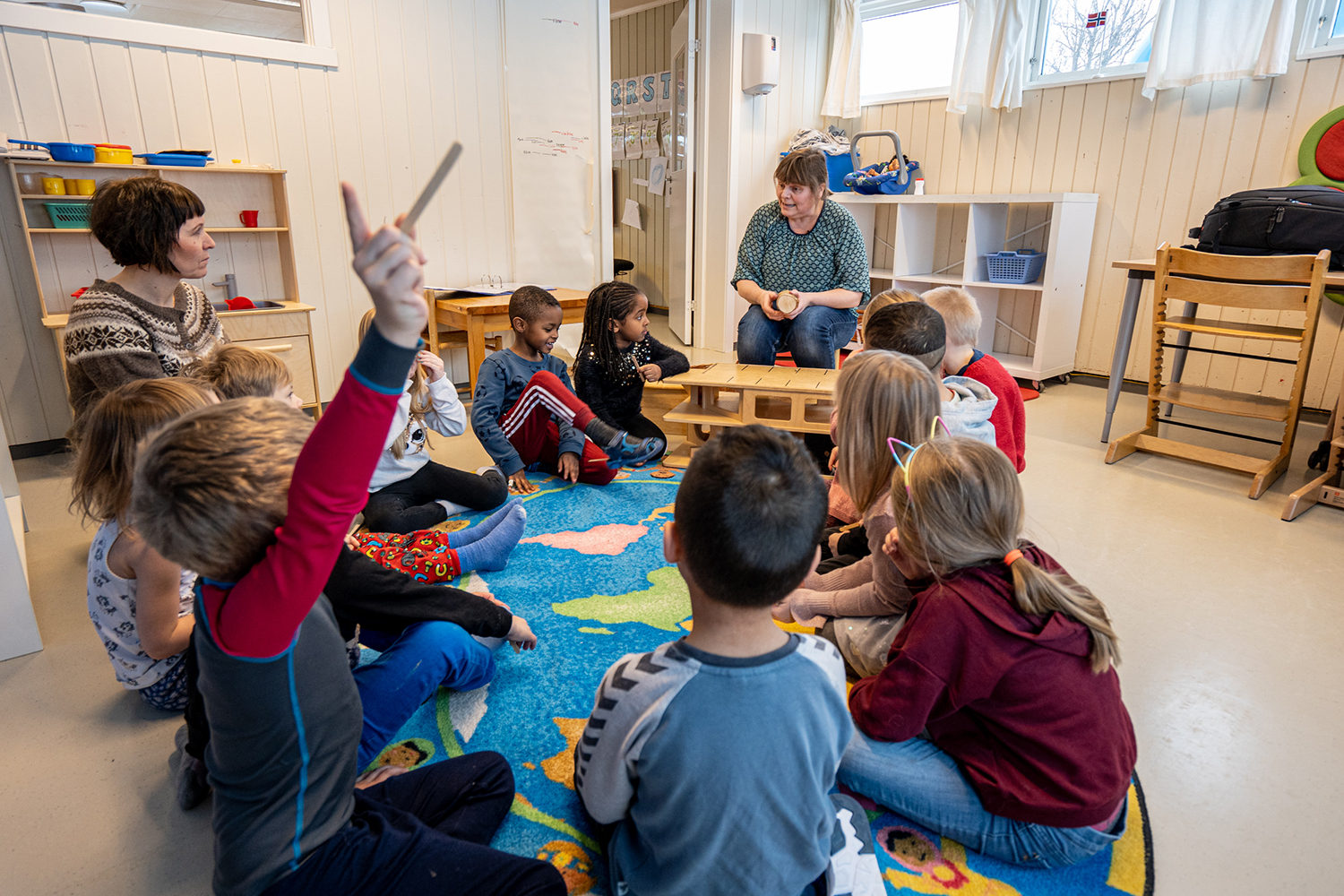
Already from infancy we learn about concepts such as colour, size, number, shape, direction, pattern and time. The educational approach known as Systematic Concept Teaching (SCT) emphasises this, the idea being that the earlier children learn and master these basic concepts, the quicker and better they will be able to put things in «its right place» in their head, and learn in a more conscious way.
If you try, you can describe a lot of attributes for something as common as a sheet of paper. What shape does it have? What colour? What can it be used for? What substance is it made of?
Elementary, you might think, but an entirely basic understanding of these concepts are central to our ability to learn, register coherences and transfer an understanding from one field to another. If you do not master these concepts, you will often struggle to understand or make yourself understood.

COLOUR, SHAPE, POSITION, SIZE, PLACEMENT, NUMBER, PATTERN, DIRECTION, USED FOR (FUNCTION), SUBSTANCE, SOUND, SURFACE, TEMPERATURE, TASTE, SMELL, TIME, CHANGE, SPEED/MOVEMENT, WEIGHT, VALUE
The basic conceptual system colour may for example be defined into individual concepts such as red, blue and green, while shape can be concretized in shapes such as square/four-sided, round, triangle – and so on.
Based on the theory of Systematic Concept Teaching, virtually all properties of any object can be described through the use of Basic Concept Systems (BCSs).

Andreas Hansen teaches Systematic Concept Teaching at UiT The Arctic University of Norway in Harstad.
One of the main reasons people do not remember well over time, is that we mix what we are supposed to learn with other things.
– When it comes to learning, a lot of it depends on us being able to analyse what is to be learned in a precise way using basic conceptual systems and related concepts. Such an analysis should also include an assessment of how that which we are supposed to learn separates itself from similar phenomena, so that we can keep things separated, Hansen says.
Magne Nyborg (1927–1996) is recognized as the founder of Systematic Concept Teaching, and central to the practical part of this pedagogy is his model for Concept Teaching (CT-model or the CTM), and his inventory of basic conceptual systems (BCS-model). Along with his wife, Ragnhild Hope Nyborg (1938–1996), he developed a teaching practise that have since been expanded with contributions from several colleagues, including Andreas Hansen.
Hansen has worked within this academic field for many years, and in 2007, he defended his doctoral thesis, “Begreper til å begripe med”.

Hansen believes that everyone will benefit from mastering the basic conceptual systems and using them, more or less consciously, when they analyse and solve problems. This is important for everyone, regardless of age and level.
– Basic conceptual systems, with related concepts, has an enormous potential for transfer in teaching and learning within different subjects and skills, all the way up to university level, explains Hansen, and points out that Systematic Concept Teaching could also be used as a preventive measure to “combat” and/or remediate learning difficulties.
If the pupils do not have a language related, and conscious relationship, to basic concepts and conceptual systems, they may struggle to learn and understand several phenomena and coherences. Hansen uses an example where a teacher is teaching pupils about the solar system with the help of models, images and video.
– Regardless of how it is illustrated, the pupils’ learning outcome will largely depend on the teacher using a precise language that the pupils understand. In this context, the teaching will to a great extent base itself on basic conceptual systems such as colour, shape, size, position, placement, direction, patterns, number, surface, (kind of) substance, temperature, speed/movement, along with other things, Hansen explains.
The pupils will not learn a lot if they do not understand these concepts well enough.
Even if everyone in principle benefits from Systematic Concept Teaching, Hansen believes that it is especially those who struggle the most that reaps the biggest benefits from it.
He has examined pupils who receive the two lowest grades in school, and combined this number with those who score a little under average and lower on IQ-tests. This accounts for around 15–20 percent of the pupils. Through Systematic Concept Teaching, Hansen believes these groups’ prerequisites for learning can be increased, through positive change of the pupils’ language related, motivational and emotional prerequisites.
– Even if there are usually complex causes to why these pupils function worse, many of those within this 15–20 percent have considerable lack of understanding of concepts, Hansen explains.
Hansen points to the fact that IQ-tests to a large degree measures what conceptual knowledge has been learned so well beforehand – that it can be transferred to solving problems in test situations.
– We know that a lot can change within this large group, both in terms of academic achievements and test results. From the experiences and results that have been gained with Systematic Concept Teaching, we assume that many of the children and young people who fall within these 15–20 percent can benefit considerably from Systematic Concept Teaching, Hansen says.
Children and young people within the following groups have been shown to benefit from Systematic Concept Teaching (SCT):
• Typically developing Children in (late) preschool age and in early classes of primary school
• Children, young people and adults with specific disabilities, including different kinds of language learning disorders
• Children and young people with general disorders of learning, combined with a lower IQ
• Children and young people with minority language background.
• Young people with “behavioural disorders”, including schizophrenia diagnosis.
In addition, there are good reasons to expect that children and youth with hearing loss also can benefit for the implementation of SCT. The same is the case for children and youth with vision problems.
Systematic Concept Teaching is used in relatively many Norwegian schools and kindergartens (in Norway kindergarten is the term for preschool), even though the majority of them have not started up yet.
Harstad Municipality has had Systematic Concept Teaching as a field of priority for many years, and the municipality has decided that this kind of teaching is to be conducted at all municipal kindergartens, and even up to second year pupils in primary school/elementary school.
Merete Steinbru is a preschool teacher and a special ed teacher, and has practised Systematic Concept Teaching for the last ten years in different kindergartens in Harstad. She believes that children have an easier time learning if they master the basic conceptual systems, along with the related concepts.

While teaching at a section for toddlers, she participated in a course provided by Harstad Municipality about Systematic Concept Teaching, and she was sceptical at first.
– I was pretty negative to start with, especially since it is called Systematic Concept Teaching. Kindergartens do not have a tradition of thinking about teaching, which made it seem strange. I think most people working in kindergartens will say that they facilitate learning, rather than actual teaching. For me, teaching is something done in schools, Steinbru says.
But when she tested it in kindergartens, she saw that it worked really well.
– I saw that the children really caught on to it. The Systematic Concept Teaching builds on the children receiving many and varied sensory experiences to learn each concept within each conceptual system. This suit kindergarten children really well, who first and foremost learn through their own actions. They taste, hear, smell and touch anything that comes their way, Steinbru says.
She points to the fact that when this is put into system and made conscious by means of words, it becomes a tool for analysis. The children themselves can discover similarities and differences in the environment around themselves, and put it into context with what they already know.
– They can tell others about their discoveries and compare their knowledge with that of others. This gives mastery and the desire to learn, something they can make use of the rest of their lives, Steinbru explains.
Sse video from Hagebyen kindergarten in Harstad, where preschoolers are visited by special ed teacher Merete Steinbru:
In order to get started with learning a basic conceptual system, the children need to learn at least 3–5 individual concepts, and each concept need to be learned through many different sensory experiences that are put into words.
This way, one ensures that the concepts are established within a system in long-term memory, and they can keep developing these for the rest of their lives.
When Steinbru was teaching the children about the basic conceptual system substance, she used the concept wood substance as an example. She brought different objects that were all made of wood, and the children could see, taste, hear and touch the objects. She told them that the substance was called wood substance, and ensured that everyone got a connection to the concept and that they used the word: wood substance!
– Through a quarter of an hour with discussions and examples, we have arranged for the pupils to have many and good associations with substances made of wood, and when they run out to play afterwards, they will see wood substances all over the place, Steinbru explains.
Even if it may seem unnatural for adults to talk about the conceptual system as substance when we talk about wood substance, metal substance or plastic substance, Steinbru is very clear on the fact that this use of language is what helps children to connect concepts to the conceptual system.
– The children themselves stop using words for conceptual systems in their daily speech when there is no need for it, but it helps them a lot when they are in the preschool age. You create a language environment that supports all the children. The conceptual systems are useful in communicating about colours, shape, position, placement, patterns and numbers, because they are good tools to direct attention, thinking and communication with, she explains.

After many years of Systematic Concept Teaching, Steinbru is convinced that there is no reason to wait for pupils to reach preschool age (that means here 4–5 years of age), before they can start learning the basic concepts and basic conceptual systems.
– I think it is possible to start with toddlers. The employees can arrange for many sensory experiences with different concepts and put these into words in combination with the words for the conceptual systems, she says.
She points to the fact that even if they have not developed speech that well, they still manage to recognize similarities and differences and express these through signs and body languages at an early age. It basically comes down to starting the job by tidying and placing the concepts in the right “mental shelves” in long-term memory, a job Steinbru believes one is never completely done with.
– I have worked with this for ten years now, and I still have these epiphanies where I think “why have I not thought about this before?” And that is how it is for all of us, we connect new experiences to the ones we already have. The basic concepts and the conceptual systems are with us throughout or lives and is the basis for what we learn later, she says.
Systematic Concept Teaching is not only relevant in Norway, but has been made relevant in three European projects and is used by groups in several European countries as well as in USA. The method has also been used at preschool- and school level by a relatively large amount of educators and institutions around Norway.
Hansen himself has been a part of many projects with Systematic Concept Teaching that targets specific students and groups of students, but at home and abroad.
– It is highly likely that Systematic Concept Teaching and basic conceptual systems has a universal touch to it, and not something that is tailored only for Norway, he says.
In the period from 2011 to 2019, Hansen collaborated with the American speech therapist and researcher Kelly Morgan in Seattle, USA, on a SCT project that included trying out SCT in an elementary school in Seattle – a collaboration that has continued beyond this project.
– Morgan teaches Systematic Concept Teaching for pupils in early school age who struggle with their learning. There we have achieved the same as in Norway. We see that children learn better, faster, and that they become more secure and can participate more in their classes – in short, they become better learners and do better in school, says Hansen.
Recently, the long term collaboration between Hansen and Morgan has resulted in a textbook in English about Systematic Concept Teaching, which together with a web page (sctresource.com) has a lot of concrete teaching material for this kind of concept teaching. In addition, the web page has a lot of material for reading-, writing- and mathematical teaching, along with tips that can be used for teaching of academic concepts in many other subjects.